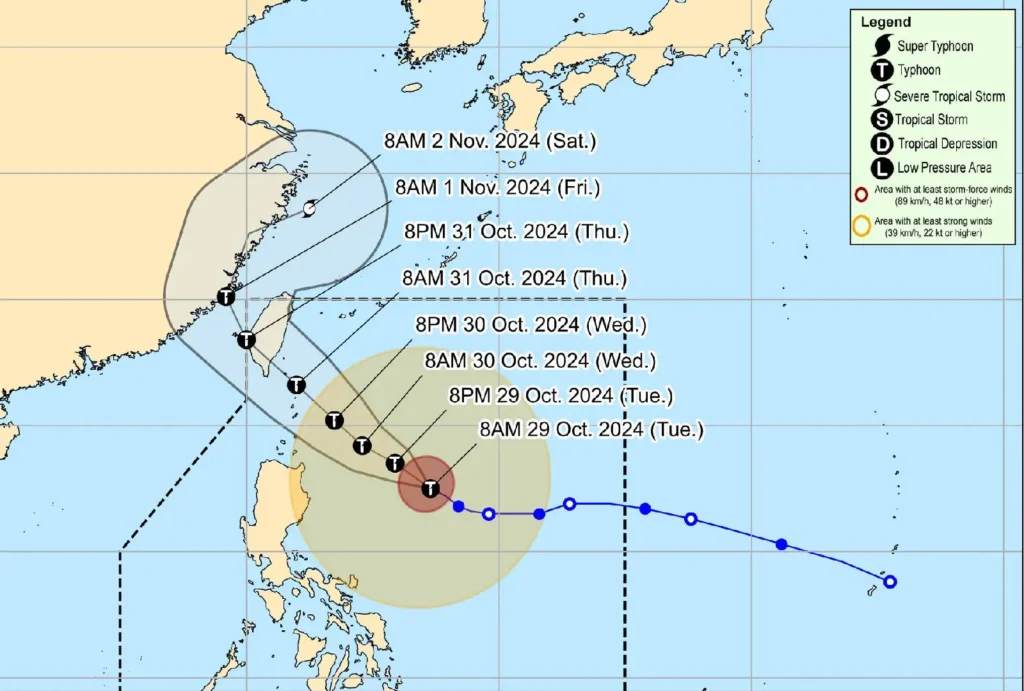The Philippine Atmospheric, Geophysical and Astronomical Services Administration (PAGASA) announced that Typhoon Leon, locally known as Kong-Rey, has intensified further as it approaches Northern Luzon.
As of 10:00 AM today, Typhoon Leon’s center is approximately 555 km east of Tuguegarao City, Cagayan, with maximum sustained winds of 130 km/h and gusts reaching 160 km/h.
Wind Signals and Affected Areas

Tropical Cyclone Wind Signal No. 2 has been issued for Batanes, Babuyan Islands, eastern Cagayan, and northeastern Isabela.
These areas should expect gale-force winds with speeds of 62 to 88 km/h and minor to moderate impacts on life and property within 24 hours.
Areas under Wind Signal No. 1, including much of Northern and Central Luzon, may experience strong winds with speeds of 39 to 61 km/h.
PAGASA warns that the highest Wind Signal level could rise to Signal No. 3 or 4 in Batanes and Babuyan Islands as the storm approaches, with a possibility of reaching Signal No. 5 if Typhoon Leon strengthens into a super typhoon.
Coastal Hazards
A Gale Warning remains in effect for the seaboard of Northern Luzon and the eastern seaboards of Central and Southern Luzon.
Mariners are advised to seek shelter, as sea conditions could reach up to 10 meters around Batanes and Babuyan Islands and 8 meters along Cagayan’s coastlines.
Inexperienced mariners and smaller vessels are advised to avoid venturing out, with rough seas also anticipated in nearby coastal areas.
Projected Track and Intensity Outlook

Typhoon Leon is moving west-northwest at 10 km/h and is expected to turn northwest by tomorrow.
By Thursday, it will make its closest approach to Batanes, potentially reaching super typhoon strength before its forecasted landfall on the eastern coast of Taiwan.
A landfall in Batanes has not been ruled out due to possible westward shifts in its track.
Typhoon Leon is expected to exit the Philippine Area of Responsibility on Thursday evening or early Friday.
Safety Measures
Communities under warning signals are urged to stay informed through local authorities and follow safety protocols.
